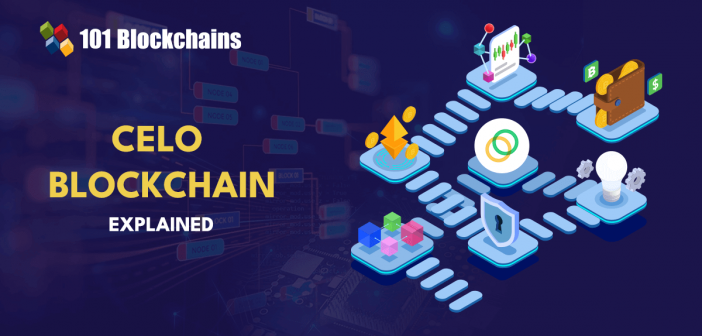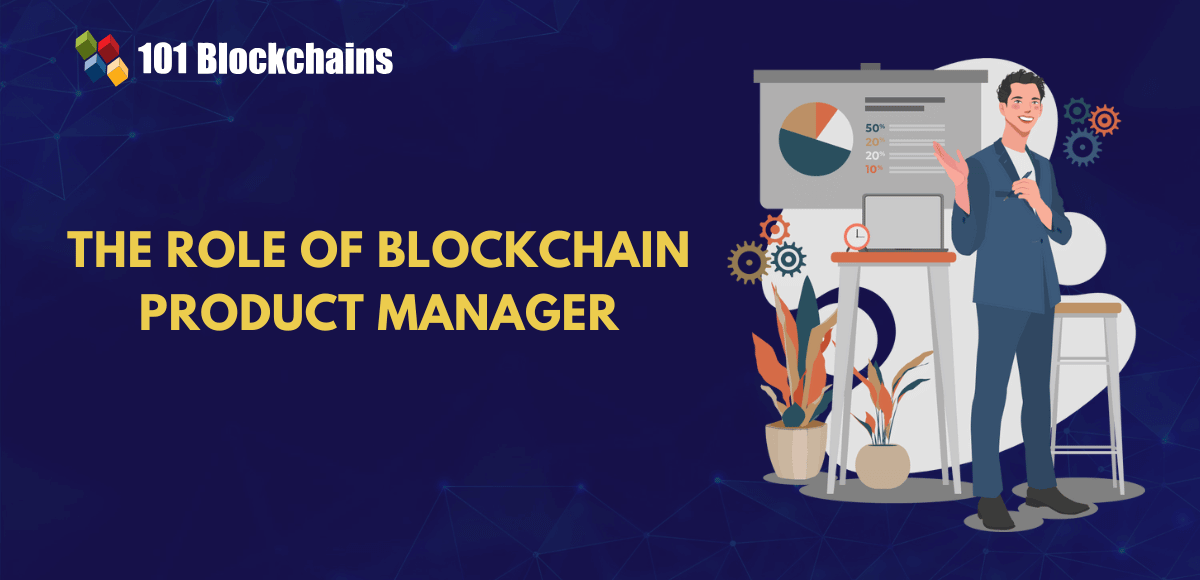Learn how blockchain truly works, master key definitions, and uncover what makes smart contracts so "smart." Dive into the fundamentals, gain valuable insights, and start your blockchain journey today!

- Blockchain
Georgia Weston
- on August 01, 2023
Know Everything about Celo Blockchain
The innovation in existing financial systems revolves largely around removing the unwanted intervention of intermediaries and restrictions. You can look for new ways to find the best utility for Celo blockchain, which has been tailored to solve one of the biggest problems in crypto and blockchain. Blockchain technology helped in solving the problems of people accessing basic financial services.
The use cases of blockchain in DeFi and cryptocurrencies have leveled the playing ground for customers of financial services. The fundamentals of the Celo blockchain explained in detail would help you learn about the reasons why you would need another blockchain amidst all the other popular alternatives. What is the need for another blockchain when you can use Ethereum and other notable blockchain networks? You can discover the answer by reflecting on the problems of accessibility.
Cryptocurrencies and DeFi applications help you access financial services such as payments, exchange of finances, passive income options, and lending. You can access these services without the involvement of any intermediaries or bureaucratic restrictions. At this point in time, you may believe that the Celo token is just another copycat resembling other cryptocurrencies.
With a computer and an internet connection, you can access DeFi and crypto applications. Therefore, Celo has emerged as a viable solution for introducing the mobile-first approach in the blockchain ecosystem. The following post helps you understand the fundamentals of Celo, its working, architecture, and benefits.
Build your identity as a certified blockchain expert with 101 Blockchains’ Blockchain Certifications designed to provide enhanced career prospects.
Why Does the Blockchain Landscape Need Celo?
Accessibility to financial services found a new definition with the introduction of blockchain technology. At the same time, it is also important to reflect on how people are gradually shifting from their computers to their smartphones. If you take a closer look at the existing financial ecosystem worldwide, you will find billions of phone-based financial transactions happening every day.
Millions of people worldwide use their phones for making financial transactions in daily purchases or e-commerce transactions. You might wonder about the relationship between Celo blockchain use cases and smartphones. Mobile-native apps have become the top priorities for sending money or settling financial transactions. The popularity of apps such as Venmo and PayPal has shown how mobile-first financial services are vital requirements for many people worldwide. However, mobile-first financial services have not been successful in accessing the benefits of DeFi or crypto.
Blockchain Imposes a Massive Burden on Cryptocurrencies
Before you find the answers to “How does Celo blockchain work?” you should find out why it is special. Crypto and DeFi transactions and data-intensive, and blockchain can facilitate security only through the distributed ledger of nodes. The nodes in the distributed ledger keep track of the ledger, ensuring consistency of new transactions with existing data. However, the nodes must record every transaction on the network, which implies the need for massive amounts of data that would require significant volumes of processing power.
Therefore, you would need a computer for engaging in crypto transactions alongside ensuring that the wallet synchronizes with the blockchain. On the other hand, a phone does not have the processing power to deal with crypto transactions. At this point of time, you would need a blockchain that allows users to access cryptocurrencies and DeFi with a ‘mobile-first’ approach.
Want to learn and understand the scope and purpose of DeFi? Enroll Now in Introduction to DeFi- Decentralized Finance Course
Foundations of Celo
The best way to understand Celo is through a reflection on its origins. One of the first highlights in the outline of Celo blockchain explained for you is the definition. It is a blockchain network that helps in allowing mobile users worldwide to use cryptocurrencies to make simple financial transactions. The Celo platform features its native blockchain alongside two distinct native tokens.
It was developed by two GoDaddy executives and an MIT professor in 2017. Interestingly, Celo token sales have attracted the attention of major investors, thereby resulting in investments worth $46.5 million within two years. Some of the principal investors in Celo include General Catalyst, Social Capital, and Andreessen Horowitz.
Founders of Celo expanded the platform’s infrastructure gradually to meet their desired objectives. You can dive deeper into the answers to “How does Celo blockchain work?” by pointing out the abilities of Celo to provide a global payment infrastructure accessible through mobile devices. The functionalities of Celo also focus on hosting decentralized applications, thereby making it a promising foundation for web3 activity.
Want to become a Cryptocurrency expert? Enroll Now in Cryptocurrency Fundamentals Course
Architecture of Celo
The next important highlight in the work of Celo would point at the architecture of the blockchain. You should understand the Celo Stack before you find a Celo blockchain explorer to monitor mobile-first transactions. Celo has been created to offer the simplest experience to end users without any prior experience in using cryptocurrencies. It is also useful for end users with low-cost devices and limitations on internet connectivity.
Celo utilizes a full-stack approach for achieving its intended objectives, with each layer of the stack created for addressing the end-user requirements. At the same time, the full-stack architecture of Celo also considers the needs of other stakeholders, such as node operators, for improving the end-user experience. Here are the important components in the full-stack approach to the architecture of Celo.
-
Celo Blockchain
The first component in Celo architecture is the Celo blockchain, which is an open cryptographic protocol for allowing applications to make transactions with smart contracts. It also helps in running smart contracts and related transactions with complete security and decentralization.
The blockchain code features elements of Ethereum alongside maintaining complete EVM compatibility for the creation of smart contracts. At the same time, it also follows a Byzantine Fault Tolerance or BFT consensus mechanism, such as Proof of Stake. It does not utilize Proof of Work consensus and follows a distinct block format, client synchronization protocols, pricing mechanisms, and transaction format.
Curious to understand the complete smart contract development lifecycle? Enroll Now in Smart Contracts Development Course!
-
Core Contracts
The second critical element which will help you understand Celo refers to core contracts in the Celo tech stack. Core contracts are the collection of smart contracts on Celo, which include the logic of the blockchain features. The core contracts not only help in defining the functionalities of Celo token but also the conditions for governance, identity attestations, and Proof of Stake consensus mechanisms. Users can upgrade and manage smart contracts through decentralized governance mechanisms.
-
Applications
The next highlight in the Celo architecture refers to the applications created for end users on the Celo platform. Celo Wallet is one of the first applications which helps users in managing accounts and making secure payments. Applications are an important component for Celo blockchain use cases in different industries. The applications on Celo could be external mobile or backend software that can interact with the blockchain for issuing transactions.
Applications could also invoke code through the Celo Core Contracts’ API. In addition, third parties could also work on deploying custom smart contracts, which can be invoked with their own applications. Applications can also focus on using centralized cloud services that could offer distinct functionalities such as transaction activity feed and push notifications in Celo wallet.
Curious to learn about blockchain implementation and strategies? Enroll Now in Blockchain Technology – Implementation And Strategy Course!
Topology of Celo Network
The architecture of the Celo blockchain offers only one part of the description for understanding the potential of Celo. You should also focus on the topology of the Celo network to understand how it has been created as something different than the regular blockchains. The topology of the Celo network includes the different machines that could run the blockchain software of Celo in unique configurations. Here is an outline of the three components which mark the topology of Celo.
-
Validators
Validators are responsible for gathering transactions coming from other nodes, followed by the execution of related smart contracts for the formation of new blocks. Subsequently, the validators would take part in a Byzantine Fault Tolerant or BFT consensus protocol for ensuring advancements in the network state.
You can use the Celo blockchain explorer to check how BFT protocols could scale up to hundreds of participants. At the same time, it also ensures that it would tolerate a maximum of one-third of the participants acting in a malicious manner. On top of it, the Proof of Stake mechanism ensures that only a limited set of nodes are selected for the role of validators.
Start learning Blockchain with World’s first Blockchain Skill Paths with quality resources tailored by industry experts Now!
-
Full Nodes
The most interesting thing about machines running the Celo network is the fact that they are not configured to serve as validators or elected for the role. Interestingly, Celo nodes do not work on mining like in the Proof of Work networks. The primary objective of the nodes focuses on serving requests from light clients alongside forwarding the transactions.
Nodes would receive fees for the transactions, and payments could offer a ‘permissionless onramp’ for community members to earn crypto. Full nodes are capable of maintaining a partial history of blockchain by transferring new blocks between each other. In addition, full nodes could leave or join the network according to their interest.
-
Light Clients
The different critical aspects in answers to “How does Celo blockchain work?” would also reflect on importance of light clients. Applications such as the Celo wallet would run light clients on the device of each user. The light clients are instances of the Celo blockchain software and could connect with full nodes.
Light clients can connect with full nodes to make requests to retrieve transaction and account data. In addition, light clients can also sign and submit new transactions. However, the light clients do not receive any updates about the full state of the blockchain.
Want to get an in-depth understanding of crypto fundamentals, trading and investing strategies? Enroll Now in Crypto Fundamentals, Trading And Investing Course.
Working of Celo
The detailed outline of important elements in the architecture and topology of the Celo blockchain explained the fundamentals of its working. Celo protocol works with a distributed and open approach and could enable users to carry out crypto payments by using their phone numbers as public keys.
The cryptographic blockchain protocol of Celo helps applications in making crypto transactions and performing computations with light clients. The concept of light clients ensures that users don’t have to host massive databases on their smartphones. Here are some of the most noticeable basic features associated with the network.
- Stablecoins are one of the important concepts in the Celo token system. Celo utilizes ERC-20 stablecoins pegged against the US dollar, known as cUSD, which can help in paying for transactions worldwide.
- Accounts linked to phone numbers would also prove how Celo is different from other blockchain networks. Celo enables secure mapping of phone numbers, thereby enabling crypto payments through phone numbers.
- Another highlight in the answers to “How does Celo blockchain work?” would point to EVM compatibility. The Core Contracts section in Celo architecture proves how it can support compatibility with Ethereum Virtual Machine.
- Self-custodial nature of Celo is also another crucial point in the working of Celo and how it benefits users. Users on Celo would not depend on third parties for making payments and could have complete access and control over their account keys.
The most powerful highlight in the working of Celo blockchain explorer or the network is the advantage of immediate synchronization on slow connections. Celo has been tailored for managing higher latency, high-cost data tariffs, and low bandwidth. It aims to break down all barriers to mobile accessibility of cryptocurrencies, DeFi, and other web3 assets. On top of it, the Celo network also utilizes zero-knowledge proofs or ZKPs for improving performance alongside ensuring security.
You can notice how Celo has become popular among web3 users with its broad range of advantages. The primary advantage of Celo blockchain use cases would revolve around the mobile-first approach. In addition, recent developments, such as introducing interoperability with Cosmos, NEAR, and Solana blockchain networks, ensure that Celo is ready for innovation and change.
Enroll now in the Blockchain Scalability and Interoperability Mastery Course to learn the skills needed to develop faster, scalable, robust, and interoperable dApps.
Conclusion
The detailed outline of basic information about Celo and its use cases reveals the different ways in which Celo blockchain helps users. Most important of all, Celo can bring blockchain and web3 transactions to your smartphones. You would not need a high-end computing hardware infrastructure for purchasing cryptocurrencies or interacting with a DeFi application.
Running a blockchain node would become easier with the innovative architecture of Celo, which includes light clients for achieving resource effectiveness. The commitment of Celo to innovation and change serves as the biggest factor in favor of Celo as a vital tool for the future of web3. Learn more about blockchain and web3 fundamentals before diving into the functionalities of the Celo network now.
*Disclaimer: The article should not be taken as, and is not intended to provide any investment advice. Claims made in this article do not constitute investment advice and should not be taken as such. 101 Blockchains shall not be responsible for any loss sustained by any person who relies on this article. Do your own research!






